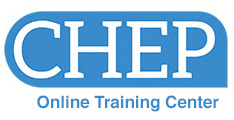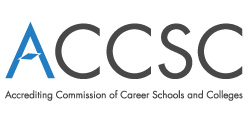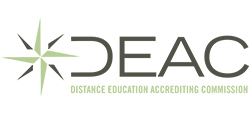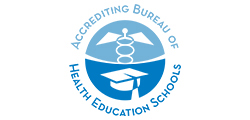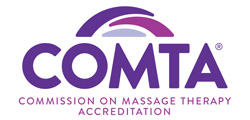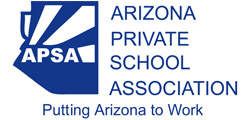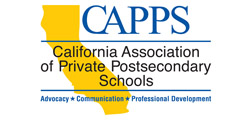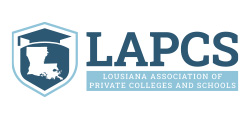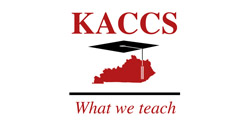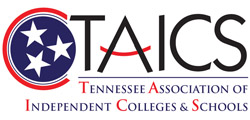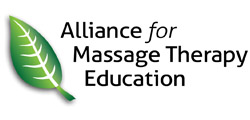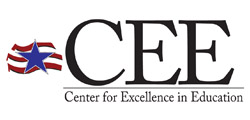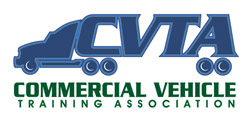Badge Evidence | Completed Courses (4 Hours Each)
ED101Effective Teaching Strategies
This introductory course covers the essential roles of a teacher and the competencies required to be a successful instructor in an educational institution. Proven techniques and strategies for planning and preparation are presented and discussed. In addition, the course offers effective methods for conducting the first class meeting and delivering course content. This course provides a solid foundation for new instructors and serves as an excellent refresher for more experienced instructors.
ED103Student Learning and Assessment
Educators work with students who want to learn specific skills that will lead to fulfilling careers. As educational instructors it is our job to help each student to achieve this goal. Just as you may have a particular style of teaching that you prefer, your students have preferred ways of learning. This course will help you to identify the different learning styles of your students so that you can adjust your instruction to better accommodate them. Good teachers also regularly monitor the effectiveness of their instruction by assessing their students’ learning. This course will examine several aspects of assessment including how to create good tests, how to ask effective questions and how to get your students to actively participate in their learning by asking questions themselves.
ED104Class Management Strategies
This course provides methods and techniques for managing students and class activities. We start by reviewing the steps instructors need to follow as they introduce a class to new students. We then discuss strategies to effectively deal with unfocused and challenging students. The course ends by describing common mistakes made by instructors and ways to avoid them.
ED106Enhancing Student Learning
This course provides methodologies and examples to help instructors increase content retention and application by students in need of support. The course starts by covering the skills needed by instructors to be clear communicators. We then discuss ways instructors can become effective in monitoring students and using student groups as learning tools. The course concludes by covering techniques and strategies to instruct diverse learners, including learners with disabilities.
ED107Creating an Accelerated Learning Environment
Retention is an issue, and what happens in the classroom is a critical factor influencing a student's decision to stay or go. The classroom environment may be hurting your students' view of the quality of your programs. In this course, you will learn tips and techniques to deal with environmental influences such as your role as the instructor, the classroom, the interactive activities, the support materials, and the sequence of instruction as well as other subtle influences. You will learn to view the environment from the student's perspective to increase your teaching effectiveness and student retention.
ED112Influencing Student Motivation
This course is intended to offer a practical explanation of how an instructor’s behaviors and choices can influence the motivation of students. It is not intended to be a theoretical or academic treatise about motivation. Module 1 offers useful tips that may help instructors to motivate students. Students’ security and autonomy are described as they influence motivation during instruction, questioning, activities, and evaluations. This is followed by a discussion of how motivation can be improved by enhancing students' sense of autonomy when making assignments, selecting instructional methods, implementing classroom procedures, and developing evaluations. In Module 2, intrinsic and extrinsic motivators are defined and compared. Finally, a variety of "miscellaneous motivators" are offered for instructors to consider.
ED119RUsing Technology to Engage and Educate
This course is an overview of a variety of ways in which educators can integrate technology and web resources into instructional courses, in order to engage learners and promote collaborative learning. A variety of strategies are included in this course to enhance the use of technology so it becomes an integral part of ongoing instructional practice. In addition, numerous links are provided to enable participants to gain more insight into how technology can be explored, secured and utilized in their courses.
ED121Creating Service Learning Opportunities for Students
Service learning programs help students take their knowledge and skills out of classrooms and labs into community settings enabling them to use critical thinking and problem solving abilities. This course provides information about the advantages of using service learning as a teaching tool while enhancing the growth of students. Implementation steps are covered so participants will be able to make service learning a part of program offerings as well as providing career opportunities for students.
ED126Integrating Technology into Education
While educators increasingly use technology in the lab setting, many don't know where to start when trying to use it during didactic instruction. Furthermore, administrators have a hard time rolling out these initiatives. This course will go through the stages of a solid rollout plan to take advantage of available technologies. It will also discuss how to teach with technology as an enhancement to education, not a replacement. This course helps instructors, administrators and support staff to better understand how to use these tools.
ED144Student Empowerment for Learning Success
This course explores the different components of student empowerment and the value that it has in learning success. Student empowerment is a necessary component for students as they transition to and through postsecondary training. Content will be presented that will raise awareness of what student empowerment is and how it can enhance the learning process for students. Strategies are given for enhancing the development of student empowerment that can be implemented both online and onsite.
ED146How Storytelling Benefits Learning
Many consider storytelling to be in the realm of fairytales and small children, but when storytelling is used well and with purpose, it can strengthen students' understanding no matter their age; it can also link contexts to aid in understanding, suggest applications to real life, and humanize the learning process. This course will identify the characteristics of storytelling that are useful in teaching and learning and will provide examples and contexts within which storytelling increases students' interest and connection. Characteristics of useful storytelling will be identified, as well as supportive resources. Examples will be given to help educators focus on the aspects of storytelling that will enhance their content and how these strategies will fit within various instructional settings.
ED149Teaching Game Design in CTE Classrooms
This course provides educators with the tools and strategies to teach game design effectively in career and technical education (CTE) settings. Through modules focused on classroom management, collaborative game development, and student assessment, teachers will learn how to foster an engaging and productive learning environment that balances creativity with discipline. Educators will explore methods for teaching teamwork, assessing diverse student projects, and integrating game design competitions to motivate and challenge students. The course also covers industry career pathways and helps teachers guide students in creating professional portfolios and connecting with game design professionals, preparing them for future success in the field.
ED206Teaching in the Lab and Shop Environment
The classroom in an educational institution is often more than just chairs, books, and a white board. Frequently the learning takes place in a lab or shop environment, where the traditional rules of classroom management and teaching may not always apply. This course covers the instructional techniques necessary for the non-traditional classroom, including strategies for teaching to each student's individual learning style. In addition, this course describes strategies for assessing student progress. Safety guidelines and considerations for specific lab and shop environments are identified.
ED400Coping with Stress and Burnout
Stress is something that is present throughout all workplaces in the world. It is often something that cannot be avoided, but instead, must be properly managed. Burnout on the other hand, is something that is less frequent, but far too prevalent. Burnout can cause even the best worker to slow down in productivity and quality (often dramatically). Throughout this course, we will discuss stress, burnout, and many of the causes that you may notice on even a daily basis. We will discuss how to appropriately handle and mitigate stressors, and how to lessen the risk of burnout occurring.
ED401Basics of Crisis Management
Crisis management begins with creating and implementing a plan of action that can be executed efficiently and quickly. As an educator, it will be important to recognize signs of crisis in yourself, fellow coworkers, and even students on campus. If you are an administrator, it not only takes a keen eye to recognize signs of crisis in yourself, but this also applies to recognizing crisis in others around you. In this course, you will explore the various aspects of a crisis, how to identify individuals in crisis, and how to appropriately respond to those individuals to improve the overall situation.
ED406Motivating Others
Motivation can be the difference between success and failure. In this course, the idea of how motivation impacts people will be discussed. Activities will focus on improving motivation in students, and other people you interact with, as well as yourself. The goal of this course is to help develop a better understanding of the topic, and produce tangible resources to help implement plans, strategies, and ideas at your institution. In addition to lecture videos, resource links, and assessments, you will be able to utilize Learning Activities, which will continue to be useful after successful completion of the course.
ED409Gamification in the Classroom
This course will explore the field of gamification and the way that gaming and gaming elements have come to impact our everyday lives, and can improve our courses. Focusing on easy-to-implement concepts, this course will help you to begin utilizing gamification elements to increase learner engagement and motivation, and increase overall student success.
The goal of this course is to help develop a better understanding of the topic and produce tangible resources to help implement plans, strategies, and ideas at your school. In addition to lecture videos, possible resource links, and assessments, you will be able to utilize the Journal and Learning Activities.
ED410Increasing Student Retention by Flipping the Classroom
The Flipped Classroom model has become one of the most commonly implemented educational models seen in classrooms today. Through this course, we will explore the basics of the flipped classroom, how and why it works to increase student retention, and go over steps to start incorporating flipped classroom elements in your courses.
The goal of this course is to help develop a better understanding of the topic and produce tangible resources to help implement plans, strategies, and ideas at your school. In addition to lecture videos, possible resource links, and assessments, you will be able to utilize the Journal and Learning Activities.
EL102Online Teaching Techniques
Your degree of success as an online instructor relies heavily on several factors, among which are your level of preparedness before the date on which the course is launched; your ability to make a smooth transition into the roles and responsibilities associated with teaching in an online environment; and the effectiveness and efficiency with which you manage learners, instructional transactions embedded in the course as well as the learning environment. In this course, you will learn how to project your authority and presence into the e-learning environment, build a relationship with each learner, promote and nurture learner participation, provide informative and constructive feedback in a timely manner, minimize attrition, manage communications, manage unacceptable behavior and resolve disagreements.
EL105ROnline Language: Communicating with Students
This course provides information to help you effectively communicate with students and encourage communication among students in an online environment. You will learn the importance of facilitating instructor-to-student (I2S), student-to-instructor (S2I), and student-to-student (S2S) communication. Digital technology tools play a vital role in the modern communication process, and several are discussed in this course. In addition, discussion is provided to help you further understand how to manage and measure communication in an online course and help students communicate effectively.
ML133Goal Setting
This course will show you how to set realistic goals, prioritize tasks, and track milestones to improve performance and morale.
ML135Time Management
This course will help you master effective time management techniques. You will learn to analyze how you currently spend your time and pinpoint opportunities for improvement. The course will show you how to plan your time efficiently using scheduling tools, control time-wasters, and evaluate your schedule once it is underway.
ML136Stress Management
In this course, you will learn the difference between positive stress that enhances productivity and negative stress that breeds tension, lowers productivity, and undercuts job satisfaction. The course includes strategies for dealing with underlying causes of worry and stress, with tactical advice and coping mechanisms for immediate problem management.
RT105RRaising the Bar to 'First-Class' Customer Service
This course uncovers the secrets of today's successful businesses and their strategies of first-class customer service. You will learn the components of first impressions that can help you increase and keep your enrollments. This course will also help you to locate the specific areas of your operations where you can implement an improved customer service plan for your institution—whether it is admissions, student services or academics.
UT101Utilizing Learning Objectives in the Classroom or Lab Tutorial
In this tutorial, we'll look at the characteristics of effective and measurable learning objectives. We'll also focus on how we can utilize learning objectives to guide us in selecting teaching methods, learning activities, and assessments that maximize student mastery of the lesson at hand.
This is a private tutorial intended for associates employed by Universal Technical Institute.




